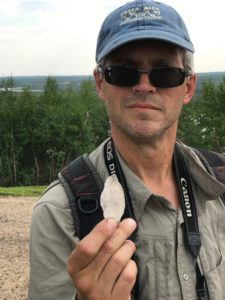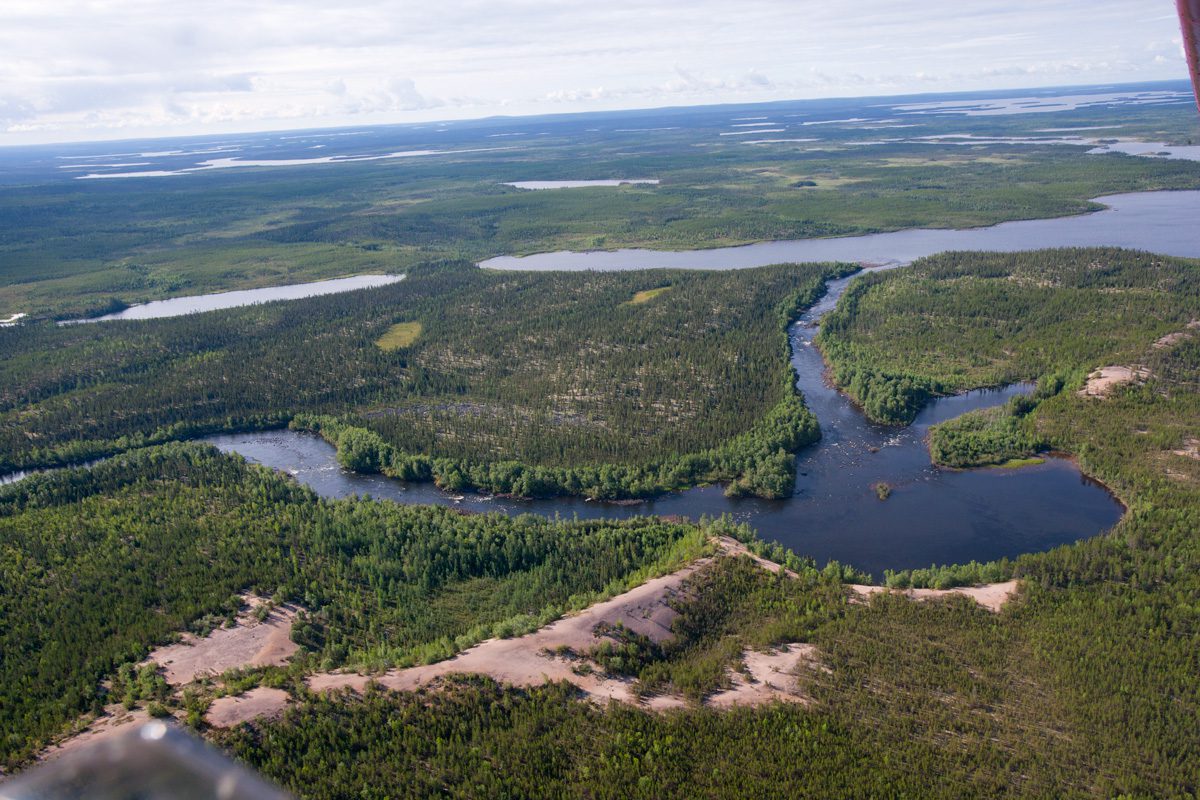The largest mammals in Northern Manitoba
Manitoba’s Moose can weigh over 1400 lbs. and stand 9 feet at the shoulder.
More about our MooseAboriginal peoples from different Indigenous Nations have long inhabited and subsisted off this unique and amazing land!
History abounds in this area since the last glacier receded. This area was deglaciated around 6000 B.C. Glacial Lake Agassiz dominated the geology of the area but by 4000 B.C. with Agassiz receding, the forest/tundra line had progressed northward and stabilized at a position fairly current to today’s positions.
The first known people to inhabit the area were the Western Plano who moved throughout central Canada and the Northern U.S. in search of food and game around an estimated 4000 B.C. The next group to inhabit the area were the Shield Archaic people who evolved from the Northern Plano and traveled Manitoba from 300 B.C to 1000 B.C. The final group was the Taltheili Shale Tradition arriving from Northern B.C. and the Yukon Territory around 750 B.C. By 600 A.D.,

Dr. Brian Kotak holding a spear head.
they had introduced bows and arrows along with stone points. All these groups were nomadic tribes following the game, usually bison to the South and caribou to the North, as the animal herds moved. The Taltheili were proto-Athapaskans, the forerunners of the early Dene, one of the two local aboriginal groups who utilize the North Seal area to this day.
The remoteness of the area has precluded extensive archeological study but a few have been done. Dr. Ronald Nash visited the area in early 70’s. He found several sites on Egenolf Lake indicating concentrated winter hunting camps there as the caribou migrated south.
Twenty-two prehistoric sites were found on Egenolf and the nearby Robertson esker. Another more recent site was carbon-dated at 1490 A.D. The sites were not permanent sites but seasonal hunting camps showing many years of use. The key to the area was the unique and extensive esker system running through it. The aboriginal peoples’ made their use a staple as they pursued their winter hunting of the caribou herds as they migrated South. In 1996, archaeologist Virginia Petch and her team focused their study on the Robertson Esker, Manitoba’s largest and most famous, which runs over 120 miles through the heart of our area from South to North, stretching into Nunavut. Their search included where the North Seal intersects Egenolf and Blackfish Lakes and they found twenty new archaeological sites including some ancient portage markings. Some sites are indicated at over 2000 years old. We continue to find artifacts thru today.
Others have traveled the area since the first Aboriginal peoples, especially the great fur traders and explorers including Samuel Hearne. Egenolf itself is named after Father Egenolf, a Catholic priest famous to this area for his fluent Chipeweyan and Cree and penchant for traveling the entire North Seal River system in freighter canoes as he tended to his flock.

Today, the North Seal area and Northern Manitoba Sub-Arctic is where three great First Nations peoples intersect in their use of the land- The Dene, the Cree, and at the very northern edge, the Inuit, as they follow the caribou herds they subsist on. Today they travel the eskers and lakes with snowmobiles instead of dog sleds as the caribou repeat their ancient migration routes from thousands of years ago.
In a land all consider special- land of the eskers, the land of the deer, ‘ the Land of Little Sticks.’
Today, these same people whose ancestors first followed the caribou across this land help make Ganglers Canada’s #1 lodge as they guide you to an incredible experience.
Manitoba’s Moose can weigh over 1400 lbs. and stand 9 feet at the shoulder.
More about our MooseOur caribou, the Qamairjuag herd, 300,000 have migrated annually for thousands of years from their calving grounds in Nunavut to spend the fall and winter in Manitoba.
More about our CaribouThese waters abound with big pike, lake trout, walleye and arctic grayling (species vary by lake). Fishing is considered a staple of all hunting packages and our hunters love it.
More about our FishHunting North is unique, offering two starkly different choices, with two vastly different worlds within a mere sixty miles of each other.
Located in the northernmost areas of Manitoba, Canada, Hunting North is unique among all Big Game Hunting Guides and Outfitters. We offer Canada’s finest fly-in Hunts.
Stay up to date with all our news and specials through our spam-free Newsletter.